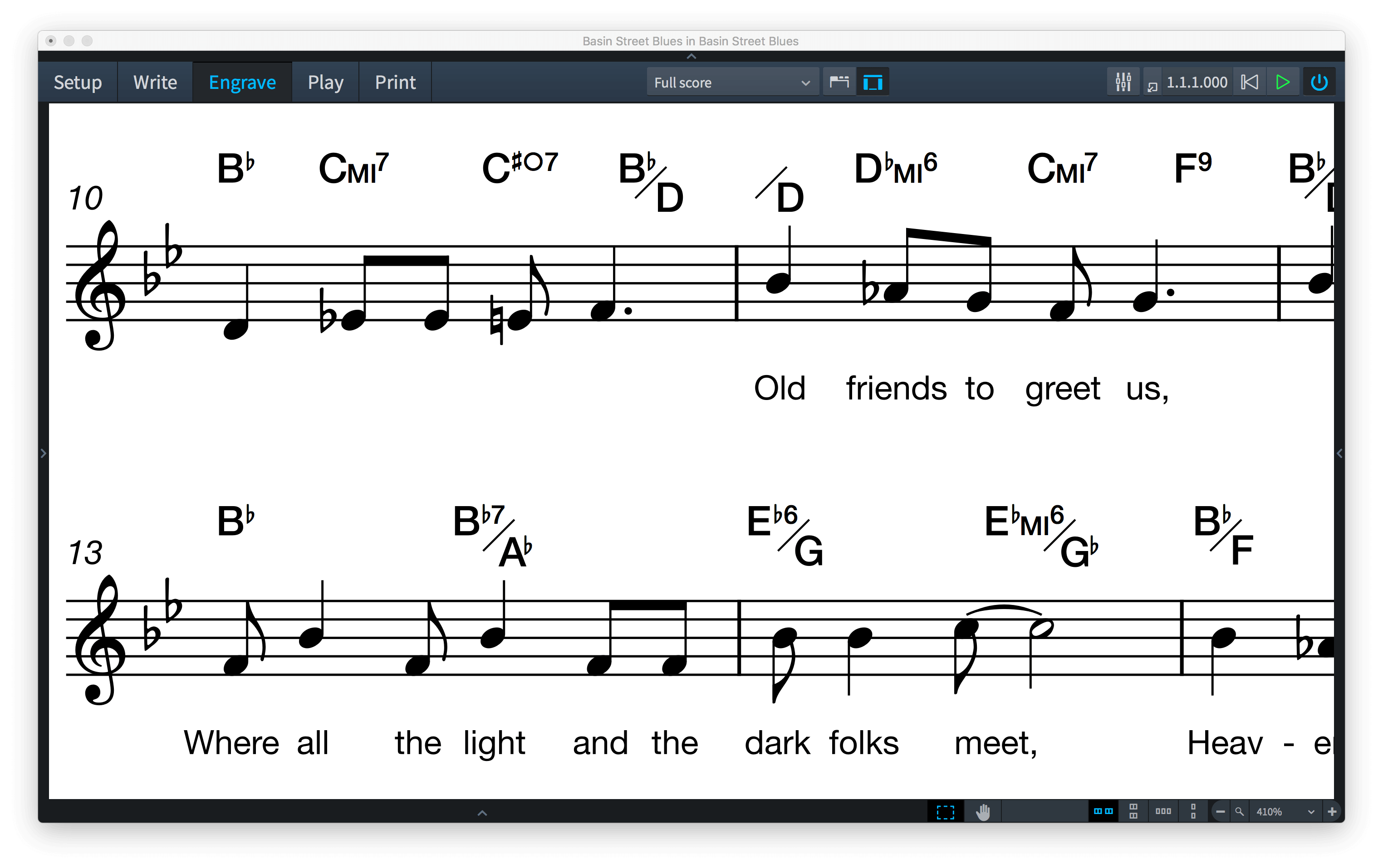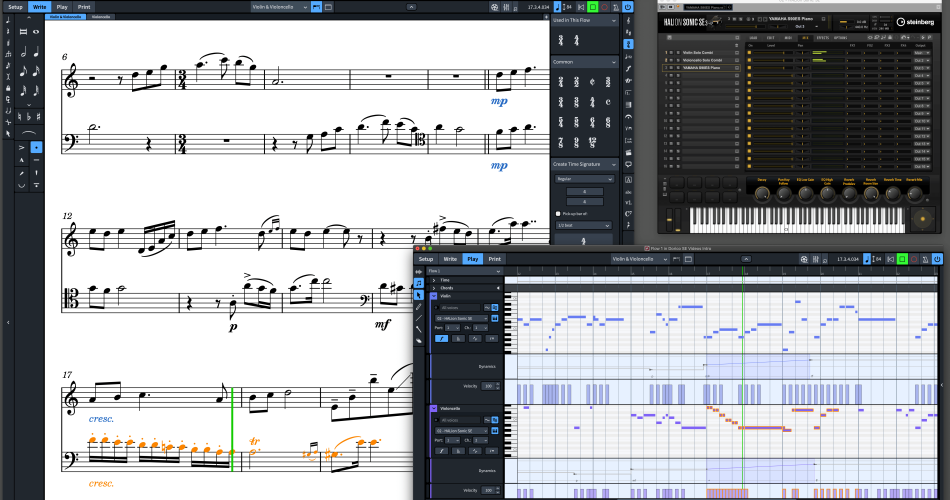

Here’s a brief video showing me recording the macro:Īfter renaming my script over in the netherworld of my computer, I gave it a whirl on the second two bars shown here (m3-4): Testing the script on the highlighted regionĪnd this is what I end up with: My first results. The option to hide stems is not available in Write Mode, so I will also need to enter Engrave Mode to get access to the appropriate toggle switch.
 This requires only notes to be selected, so first I have to re-select everything since using the intervals popover leaves only the new notes selected, then I need to use the Edit>Filter>Notes and Chords menu command so that other elements like dynamics won’t prevent me from using the properties panel. Turn each into a 2nd inversion triad by invoking the Intervals Popover (Shift+I) and entering “3, -4”. Transpose notes up an octave (Opt+Cmd+up arrow on Mac, Ctrl+Alt+up on Windows). Steinberg has not released any real documentation on all the hooks the scripting engine has into Dorico, but I wondered if some of the skills I have learned for JW Lua might still come in handy, so I set out to create a somewhat complex macro to play with. Of special importance is the location of the generated scripts, and the necessity to rename the a file in order to access it from the menu. If you are not familiar with how Dorico’s macro feature works, there’s another Of Note post you can read here to get you started. I’m very excited about the fact that Dorico also uses the Lua scripting language as the basis of its macro system.
This requires only notes to be selected, so first I have to re-select everything since using the intervals popover leaves only the new notes selected, then I need to use the Edit>Filter>Notes and Chords menu command so that other elements like dynamics won’t prevent me from using the properties panel. Turn each into a 2nd inversion triad by invoking the Intervals Popover (Shift+I) and entering “3, -4”. Transpose notes up an octave (Opt+Cmd+up arrow on Mac, Ctrl+Alt+up on Windows). Steinberg has not released any real documentation on all the hooks the scripting engine has into Dorico, but I wondered if some of the skills I have learned for JW Lua might still come in handy, so I set out to create a somewhat complex macro to play with. Of special importance is the location of the generated scripts, and the necessity to rename the a file in order to access it from the menu. If you are not familiar with how Dorico’s macro feature works, there’s another Of Note post you can read here to get you started. I’m very excited about the fact that Dorico also uses the Lua scripting language as the basis of its macro system. 
I have been spending a lot of time lately working in the JW Lua plug-in for Finale (here’s a shameless plug for the JetStream Finale Controller), but I have also been falling in love with Dorico.







 0 kommentar(er)
0 kommentar(er)
